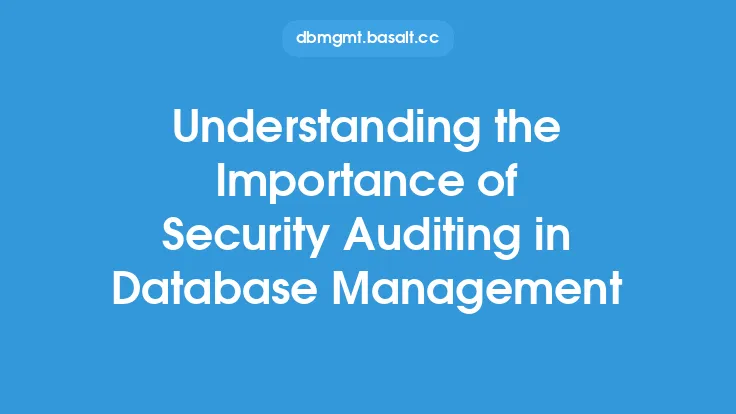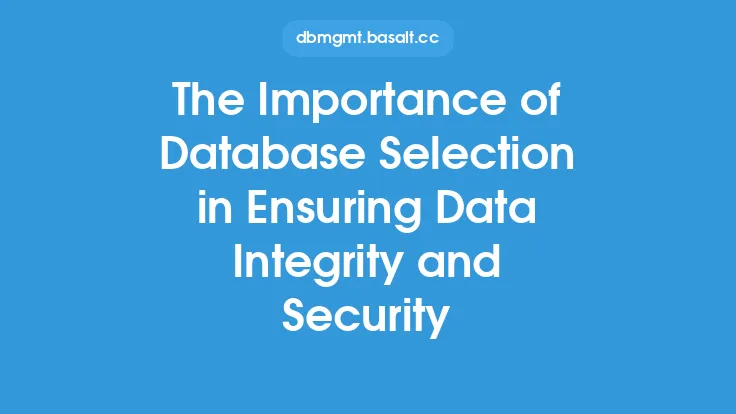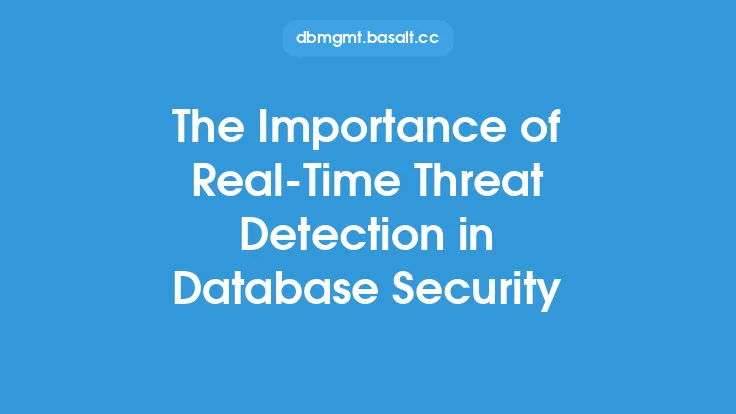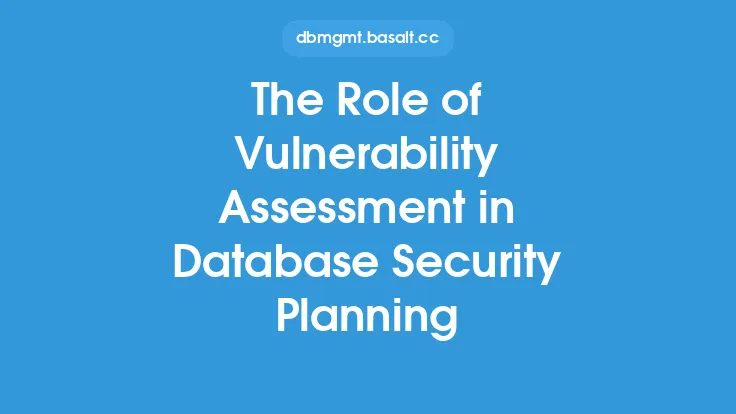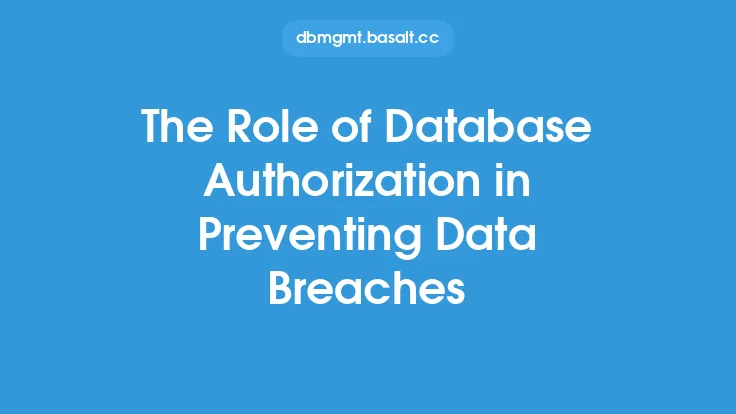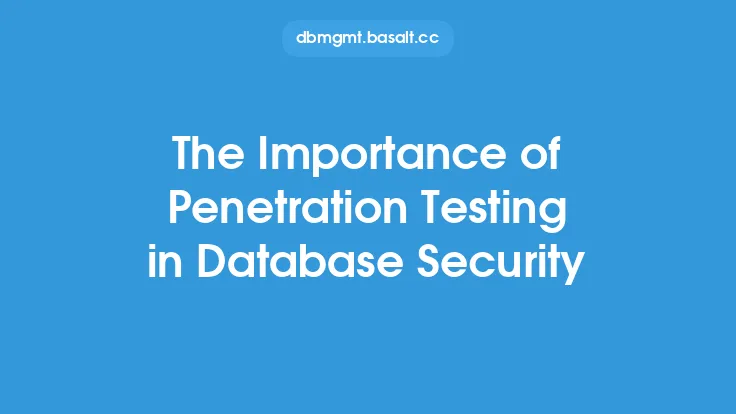In today's digital age, databases have become the backbone of most organizations, storing sensitive information and powering critical applications. As such, ensuring the security of these databases is of paramount importance. One crucial aspect of database security is authentication, and at the heart of authentication lies the humble password. A strong password is the first line of defense against unauthorized access, and its importance cannot be overstated. In this article, we will delve into the world of passwords and explore why strong passwords are essential for database security.
Introduction to Passwords
Passwords have been the primary means of authentication for decades, and their use is ubiquitous. A password is a secret sequence of characters that only the authorized user knows, and it is used to verify the user's identity. Passwords can be thought of as a digital key that unlocks access to a database, application, or system. However, passwords are only effective if they are strong and well-protected. A weak password can be easily guessed or cracked by an attacker, compromising the security of the entire database.
The Risks of Weak Passwords
Weak passwords are a significant risk to database security. According to various studies, the most common passwords used by individuals are easily guessable, such as "password123" or "qwerty." These passwords can be cracked using brute-force attacks or dictionary attacks, where an attacker uses a list of common passwords to try and gain access. Additionally, weak passwords can be vulnerable to phishing attacks, where an attacker tricks the user into revealing their password. Once an attacker gains access to a database using a weak password, they can exploit sensitive data, disrupt operations, or even use the database as a launching point for further attacks.
Characteristics of Strong Passwords
So, what makes a password strong? A strong password should have the following characteristics:
- Length: A strong password should be at least 12 characters long. The longer the password, the harder it is to crack.
- Complexity: A strong password should contain a mix of uppercase and lowercase letters, numbers, and special characters. This makes it harder for attackers to guess or crack the password.
- Uniqueness: A strong password should be unique and not used for any other account or application.
- Randomness: A strong password should be randomly generated and not based on easily guessable information, such as the user's name or birthdate.
Password Storage and Protection
Once a strong password is created, it is essential to store and protect it properly. Passwords should never be stored in plaintext, as this makes them easily accessible to attackers. Instead, passwords should be hashed and salted, which makes it computationally expensive for attackers to crack them. Hashing involves transforming the password into a fixed-length string of characters, while salting involves adding a random value to the password before hashing. This makes it harder for attackers to use precomputed tables of hashes (known as rainbow tables) to crack the password.
Best Practices for Password Management
To ensure the security of databases, it is essential to follow best practices for password management. These include:
- Implementing password policies that enforce strong passwords and regular password changes.
- Using password managers to generate and store unique, complex passwords.
- Enabling two-factor authentication (2FA) to add an additional layer of security.
- Regularly monitoring and auditing password usage to detect and respond to potential security incidents.
- Providing training and awareness programs to educate users about the importance of strong passwords and password security.
Technical Implementations
From a technical perspective, there are several implementations that can be used to enforce strong passwords and protect databases. These include:
- Using password hashing algorithms, such as bcrypt or Argon2, which are designed to be slow and computationally expensive.
- Implementing password blacklisting, which prevents users from using easily guessable passwords.
- Using password cracking tools, such as John the Ripper or Hashcat, to test the strength of passwords and identify vulnerabilities.
- Integrating password management with existing authentication protocols, such as Kerberos or LDAP, to provide a seamless and secure authentication experience.
Conclusion
In conclusion, strong passwords are a critical component of database security. By understanding the risks of weak passwords, the characteristics of strong passwords, and the best practices for password management, organizations can protect their databases from unauthorized access and ensure the confidentiality, integrity, and availability of sensitive data. By implementing technical solutions, such as password hashing and salting, and following best practices, organizations can ensure the security of their databases and protect against potential security threats. Ultimately, strong passwords are the first line of defense against database attacks, and their importance cannot be overstated.
